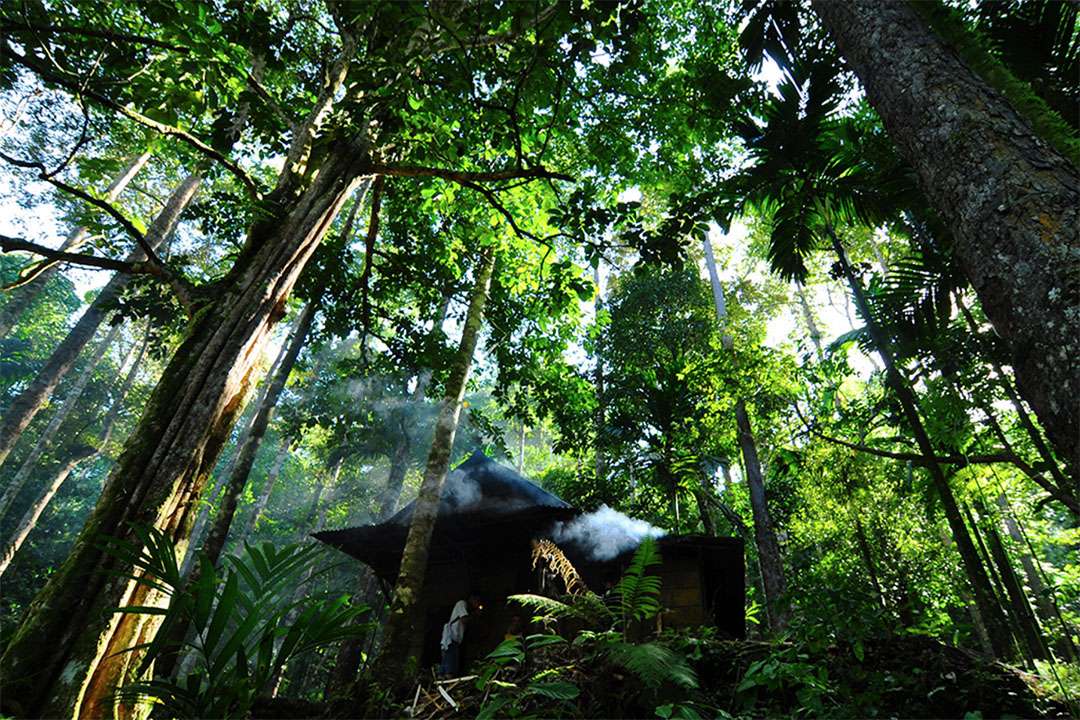The International Union of Forest Research Organizations Special Project World Forests, Society and Environment (IUFRO WFSE) has released a book highlighting forests as a critical base for sustainable development and arguing that forests should be considered in all related decision-making. The book offers a multidisciplinary, global assessment of interlinkages among the SDGs and their targets with the aim of increasing understanding of synergies and trade-offs among the Goals from the perspective of forests and people.
The book titled, ‘Sustainable Development Goals: Their Impacts on Forests and People,’ examines the conditions that influence SDG implementation and prioritization. It devotes a chapter to each of the 17 SDGs. On SDG 2 (zero hunger), the publication states that agricultural expansion to achieve global food security comes at the “expense of forests ecosystems, critical for biodiversity and the provision of ecosystem services.” The chapter explores how the current food system polarizes forest conservation and food conservation and argues that these areas “should and can be harmonized.”
On SDG 10 (reduced inequalities), the chapter examines forests and people from an environmental justice perspective. On SDG 16 (peace, justice and strong institutions), the chapter asserts that SDG implementation that strengthens state institutions and the rule of law is “likely to reinforce existing inequalities.” The chapter points out that, “the goals of SDG 16 may best be served by legal reforms that strengthen local rights to land and resources.” The chapter stresses that the impacts of SDG 16 on forests and people will depend on the shape of power and resource distribution.
On synergies and trade-offs, the book argues there are two broad groups of SDGs. First, there are SDGs that focus on governance, institutional and social conditions and contribute to an enabling environment for inclusive forest conservation and management, and they produce associated livelihoods benefits. In particular, implementation of SDG 13 (climate action) and SDG 15 (life on land) is projected to positively impact forests, although the book cautions it is not yet clear how these two SDGs can counter the negative impacts of expansion of agriculture land and infrastructure. Implementation of other SDGs may have mixed outcomes, depending on the contextual conditions. SDG 6 (clean water and sanitation), for example, can have a positive impact on forests because forests are often conserved in upper watersheds to ensure downstream water supplies. However, forest plantations can require large quantities of water, resulting in negative outcomes. Similarly, establishing or conserving green areas can have a positive impact on SDG 11 (sustainable cities and communities); conversely, if there is an increased recreation in sensitive forest areas, progress on SDG 11 will have a negative impact on forests.
Second, other SDGs directly affect land use and are predicted to impact forests, resulting in a high potential for trade-offs. The SDGs primarily linked with deforestation or forest degradation are SDG 1 (no poverty), SDG 2, SDG 7 (affordable and clean energy) and SDG 9 (industry, infrastructure and innovation). In addition, SDG 5 (gender equality), SDG 10, and SDG 14 (life below water) may contribute to deforestation and forest degradation. The book states that SDG 9 is likely to have the strongest effect on deforestation and forest degradation as a result of infrastructure expansion, which often encourages large-scale agricultural projects. The authors find that SDG 4 (quality education), SDG 5, SDG 8 (decent work and economic growth), SDG 10, SDG 11, SDG 12 (responsible consumption and production), SDG 13, SDG 15 and SDG 16 can mitigate negative impacts from SDG 9. SDGs 1 and 2 are predicted to impact forests through the expansion of agricultural production, which then leads to deforestation and forest degradation.
The authors conclude that the exact impact of the SDGs on forests and people will be “highly dependent on the respective ecological and socio-economic context” and how connections between forests and people happen on the ground. They recognize that the SDGs have “partially conflicting visions for forests and people,” making it necessary to set priorities and consider trade-offs when implementing the Goals.
The authors highlight that sustainable development at the forest-people interface requires recognizing and addressing major forces that drive unsustainable development, “integrating forest governance and management into a broader landscape perspective,” and continuously learning and adapting to work towards sustainable forest management.
This initiative was coordinated by the Natural Resources Institute Finland. [Publication: Sustainable Development Goals: Their Impacts on Forests and People] [Publication: Executive Summary]
SDGs
Issues
- Agriculture & Food Security,
- Afforestation & Reforestation,
- Deforestation & Forest Degradation,
- Mitigation,
- Biodiversity,
- Conservation,
- Climate Change,
- Landscape Approach,
- Economics & Investment,
- Sustainable Use,
- Energy,
- SFM,
- Forests & REDD,
- Gender,
- Governance,
- Land,
- Oceans & Coasts,
- Poverty Eradication,
- Sustainable Consumption & Production,
- Sustainable Development,
- Transport,
- Water & Sanitation
